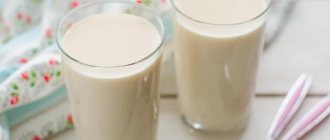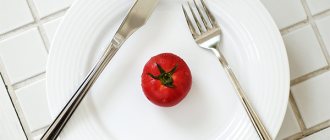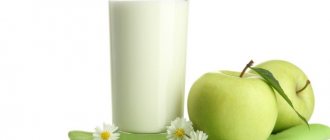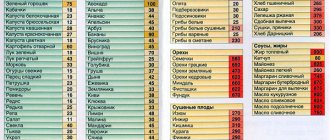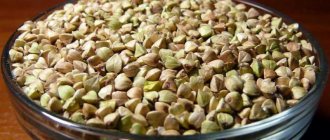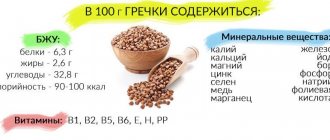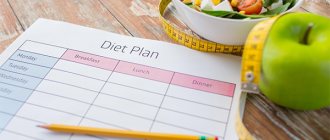Why is it important to follow a diet for urticaria?
Skin sensitivity to certain products can affect the skin at a rapid rate. It is this that reflects the inability of internal organs to function normally. Let's look at cases where the digestive system is unable to remove toxins and in which cases harmful substances accumulate more and more. When this happens in the body, the skin and mucous membranes give a signal about a deviation in the functioning of the immune system.
The inflammatory process manifests itself through the formation of acne, pimples and rashes. In some cases, the skin may peel and secrete oil more intensely. When an allergen and irritant enters the body, brain cells send a signal to the body to detect the foreign element. The body, in turn, reacts as follows, it releases antibodies and histamine. We have schematically depicted the body's reaction to the release of histamine:
The body's response to histamine release
This hormone is capable of dilating blood vessels, so that fluid enters the subcutaneous layer and tubercles and redness form on the skin - these are the main signs of urticaria. However, it is quite possible to eliminate the symptoms of urticaria by changing your diet. Treatment of urticaria with a diet helps improve well-being, prevents anaphylactic shock and relieves exacerbation.
Why is that? Because the most common cause of acute urticaria is the consumption of food allergens. Food, along with pollen, chemicals and medications, can cause an allergic condition. Some foods contain natural histamines that need to be reduced or eliminated in the diet. Thus, diet therapy, or even better, hypoallergenic therapy, helps determine what food should be excluded from the diet so that an acute condition does not develop into a chronic one.
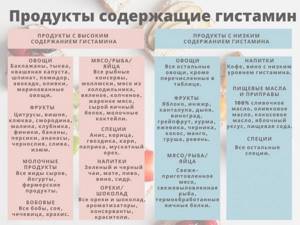
Table of foods containing histamine
Rules and features of nutrition for urticaria
Hives, as one of the manifestations of allergies in the body, is an incorrect reaction of the immune system, when seemingly harmless things (food, dust, animal hair, cold and heat) are perceived by the body as danger. The essence of food allergies is that protein in foods is perceived as foreign. In this case, cough, heartburn, rash, itchy skin and other unpleasant symptoms appear.
A diet for urticaria allows you to:
- reduce the likelihood of a reaction;
- relieve symptoms;
- help the gastrointestinal tract cleanse the body of toxins;
- identify food allergens;
- rid the body of the need to take antihistamines.
That's why:
Avoid store-bought semi-finished products and eat food that was prepared at home and from proven products. Eat often, but little by little (4-5 times a day). Do not rush to return your child to his previous nutrition plan after he has recovered. Make adjustments to the menu gradually and monitor your body’s reaction. Remember that foodborne urticaria can be treated with diet; drugs are prescribed in more severe cases.
Avoid dyes and preservatives, try to eat more natural products.
The diet for urticaria should include vegetables and fruits (mandatory), cereals, meat and low-fat dairy products. Below we will take a closer look at which diet is the best treatment for urticaria.
General rules
Food allergies ( urticaria , angioedema and others) are based on individual immunoconflict reactions to certain protein antigens contained in food products, which are absolutely harmless to most other people.
Urticaria is a group of diseases of various etiologies and is manifested by skin elements in the form of an urtic rash (blisters) localized both on the surface of the skin and on the mucous membranes, gradually enlarging and merging with each other and accompanied by itching. The most common is allergic urticaria, which is caused by various types of allergens, including food products. In principle, almost all food products are allergenic to one degree or another.
Below is a list of the most common food allergens:
- products containing animal proteins: milk, eggs, seafood;
- cereals: wheat, rice, rye, barley, corn, oats, cane;
- cruciferous vegetables: cabbage (white cabbage, Brussels sprouts, cauliflower), mustard, turnip, horseradish, radish;
- pumpkin: cucumber, pumpkin, watermelon, melon, zucchini;
- citrus fruits (tangerines, oranges, lemons);
- Compositae: artichoke, chicory, lettuce, sunflower;
- legumes: lentils, beans, soybeans, peas;
- buckwheat: buckwheat, rhubarb;
- nightshades: tomatoes, potatoes, red and green peppers, eggplants;
- heathers: cranberries, blueberries, lingonberries;
- Rosaceae: strawberry, wild strawberry, plum, pear, apple, peach, apricot, almond;
- umbelliferous: dill, parsley, celery, onion;
- Liliaceae: onion, asparagus, garlic;
- histamine liberators (products that do not cause allergies in themselves, but provoke the release of the allergy mediator - histamine : food additives in the form of flavors, dyes, preservatives, chocolate, coffee, vinegar, smoked meats, mustard, mayonnaise, alcohol).
A diet for urticaria in adults is an essential component of treatment and is aimed at excluding (eliminating) foods (if known) that provoke allergic reactions from the patient’s diet. If such a food agent is not identified, then an elimination diet can also be used for diagnostic purposes. In general, a diet for food allergies should be based on the following principles:
- exclude from your diet food agents known to you that provoke allergic reactions and foods that cause a cross-reaction in you (for example, all red vegetables, berries and fruits);
- Avoid excess protein content in the diet;
- do not include unknown or genetically modified products on the menu;
- eat simple food containing a minimum of ingredients, exclude complex dishes, including various seasonings and sauces;
- use only fresh products, avoid shelf-stable products (canned food, preserves);
- give preference to homemade dishes, do not include semi-finished products in your diet;
- try to optimally diversify the menu, since a product that is often eaten can have a sensitizing effect;
- limit the consumption of table salt and simple carbohydrates, as well as fried, spicy and salty foods;
- Completely avoid drinking alcoholic beverages.
Despite the fairly large list of foods to be excluded or limited, a hypoallergenic diet should be physiologically complete, but not excessive in energy value and micronutrient (especially proteins). Allergenic foods and dishes containing them even in minimal quantities are excluded from the diet. So, if you are allergic to chicken eggs, avoid creams, mayonnaise, baked goods, casseroles and all dishes that contain eggs in the recipe.
If the allergic trigger is not known, then the diet is limited to foods that most often cause an allergic reaction - eggs, milk, fish, seafood, citrus fruits, fish caviar, tomatoes, chocolate, honey, strawberries, melon, nuts. At the same time, it must be taken into account that prolonged heat treatment of products reduces their allergic properties. In chicken eggs, proteins are of great allergic significance.
Easily digestible carbohydrates (sugar and products containing it - sweets, jam, confectionery), chocolate, honey are subject to restrictions, thereby reducing the inflammatory process. Sugar can be replaced with saccharin , xylitol , and sweetener . The diet increases the content of vitamins and bioflavonoids , which strengthen the walls of blood vessels. The consumption of salt and salty foods is significantly limited.
The diet is enriched with foods rich in calcium (fermented milk drinks, cottage cheese), which has anti-allergic and anti-inflammatory effects. At the same time, limit the diet to foods containing a high amount of oxalic acid, which reduces the absorption of calcium.
Some types of fish are subject to exclusion (herring, mackerel, tuna, and “red” fish, the meat of which contains a large amount of histamine, which increases allergic reactions). Almost all crustaceans (crabs, shrimp, crayfish, lobsters) have pronounced cross-antigenicity, therefore, in case of intolerance to one species, it is necessary to exclude other species from the diet.
Spices and seasonings, strong meat, mushroom and fish broths, spicy dishes, smoked foods and sauces are excluded or limited. Milk globulins have pronounced allergic properties, which should also be excluded. It is preferable to prepare dishes by boiling or baking; frying foods is prohibited. Chemical sparing of the gastrointestinal tract reduces the absorption of allergenic triggers in the intestines. To improve the digestion of potential allergens - food proteins, it is necessary to practice fractional meals and a reduced portion size.
Urticaria in adults can occur in both acute and chronic forms with periodic exacerbations and remissions, and each of these forms has the specifics of therapeutic nutrition. During an exacerbation, a hypoallergenic diet that is extremely limited in the range of products (to which there is no allergic reaction) is prescribed.
As the clinical manifestations subside, various vegetables and fruits are introduced into the diet in small doses: first, green or yellow in color, and after a few days, in the absence of rashes, representatives of these families of orange (pumpkin) and red color. In small quantities, boiled fish of low-fat white varieties, white bread, fresh onions, fruit puree and freshly squeezed juices, compotes are introduced into the diet.
Basic principles of diet for a one-year-old child with urticaria
A baby's skin rash is a result of the release of histamine. In order to stop its production, it is necessary to exclude foods that contain high levels of histamine from the baby’s diet. If the baby is breastfed and complementary foods, then the mother should return to breastfeeding only for a while. If a baby develops hives due to dairy products, they should be fed with hypoallergenic infant formula until the symptoms disappear. The photo shows hives on a child’s face and shoulders:

Photo: Hives on a child’s face and shoulders
After the symptoms disappear, it is recommended to introduce a new dish every two weeks carefully, monitoring the body’s reaction. If the baby has severe urticaria, the nursing mother should especially follow a special diet and exclude foods that cause allergies in the baby.
Basic principles of diet for a teenager with urticaria
Hives are a problem in which red, itchy, and swollen patches appear on the skin.
Most urticaria in children is caused by acute viral diseases. Other causes of hives include food, medications, and other triggers. Let's consider how food products affect the health of a child and adolescent, and what foods can be consumed.
Diet for urticaria in children: a list of products according to the recommendations of allergists
So, what can a child with hives eat and what diet should they follow? Avoid foods that contain natural histamine. Allowed to eat:
- Cereals and porridges: oatmeal, buckwheat, corn, rice, wheat. Porridge must be cooked in water. It is necessary to exclude the use of semolina porridge, as it is a rather allergenic cereal.
- Vegetables: they can be eaten fresh, boiled or stewed. Give preference to green vegetables (broccoli, zucchini, cucumbers, fresh herbs. Eliminate carrots, tomatoes and beets from your diet.
- Fermented milk products: it is allowed to consume low-fat cottage cheese, kefir and yogurt without additives (homemade, for example).
- Baking: It is allowed to eat yeast-free bread made from whole grains or with bran. Use dried bread.
- Meat: boiled lean meat (turkey, chicken, lean beef) is allowed.
- Fruits: green apples, apricots, pears, bananas are allowed. Bananas are especially useful for cleansing the intestines, so they can be included in your daily diet.
In a limited version, it is allowed to use:
- boiled potatoes (before cooking, you need to soak them in water for a couple of hours);
- salt and sugar;
- bread;
- butter.

Table of main foods that a teenager with hives can eat
Basic principles
For urticaria, it is important to combine a balanced diet and its hypoallergenicity.
Nutrition rules:
- Exclusion of traditional allergens and exotic products - potential provocateurs of the disease.
- Reducing food colorings, flavor enhancers, and flavorings to a minimum. They are often present in processed foods, which are bright and strong-smelling.
- Reduce salt consumption, avoid ready-made foods high in salt (chips, crackers, nuts).
- Drink up to 2 liters of clean water daily and prohibit strong tea.
- Including natural antioxidants in food (berries, green tea).
- Enriching the diet with foods high in vitamins B (whole grain bread, cereals), C (dark green vegetables), which increase immunity.
- Healthy food items include zinc-rich celery, asparagus, sesame, and beef.
- Inclusion in the diet of Omega-3 fatty acids found in flaxseeds, soybeans, and sea fish.
- Elimination of magnesium deficiency through rice, beans, and lentils.
The frequency of meals is important for recovery: these are three main meals with two snacks in between. In this case, the serving size depends on the stage of the disease and ranges from 100 to 300 grams.
As a rule, there are no special restrictions on its calorie content. Separate nutrition with the consumption of certain food groups at different times is also useful.
The main methods of cooking are boiling, including steaming, stewing, and baking. Before cooking, cereals are soaked for half a day, and it is recommended to boil meat twice, draining the first broth.
Basic principles of diet for an adult with urticaria
A diet for urticaria in adults may contain the same foods as a diet for teenagers. Since the principle is the same (limit the consumption of foods containing histamine, allergens).
Nutrition should be complete and gentle. It is necessary to limit salt intake (up to 7 g/day). All dishes must be boiled and then subjected to additional processing (baking).
Broths for soups need to be changed three times, especially if you are cooking meat, fish or chicken. You can eat about 2800 kcal per day. It is also necessary to divide meals into 5-6 times a day. If you experience frequent swelling of the skin, it is recommended to limit your intake of free fluid.

Basic rules of diet for urticaria in adults
When following a diet for urticaria in adults, it is necessary to determine what you can eat and what you cannot. Below we have compiled a detailed list of approved foods for adults with hives.
List of approved foods for adults with urticaria:
- Boiled lean meat (chicken, rabbit, beef);
- Boiled potatoes in water without fatty dressings;
- Porridge (wheat, oatmeal, buckwheat, rice);
- Durum wheat pasta;
- Soups cooked without meat broth and frying;
- Low-fat dairy and fermented milk products (preferably homemade);
- Green or white vegetables, steamed, boiled or stewed;
- Whole grain bread, rye bread, with bran and seedings;
- Greens should include lettuce, parsley, dill;
- Tea (without sugar), fructose may be added;
- Vegetable oils;
- Galette cookies.
Below we will describe in more detail the menu and recipes for a diet for urticaria in adults. But first, let’s determine which foods are useful and which are harmful for urticaria.
Authorized Products
The diet of a hypoallergenic diet should include lean (without skin) dietary meat of chicken, turkey, rabbit, boiled or stewed. Potatoes boiled as a puree in water or in separate pieces are allowed as a side dish. From cereals - buckwheat, wheat, oatmeal.
The first courses are prepared in vegetable broth without frying with the addition of garden herbs. It is allowed to include low-fat fermented milk products, fresh low-fat cottage cheese and yogurt without additives in the diet.
For baked goods, you can eat whole grain or bran bread, dry biscuits, pasta, and durum wheat.
Vegetables: stewed or boiled zucchini, cabbage, cucumber, onion, lettuce. Among fats, preference is given to vegetable fats (sunflower or olive).
Table of permitted products
| Proteins, g | Fats, g | Carbohydrates, g | Calories, kcal | |
Vegetables and greens | ||||
| eggplant | 1,2 | 0,1 | 4,5 | 24 |
| beans | 6,0 | 0,1 | 8,5 | 57 |
| zucchini | 0,6 | 0,3 | 4,6 | 24 |
| cabbage | 1,8 | 0,1 | 4,7 | 27 |
| broccoli | 3,0 | 0,4 | 5,2 | 28 |
| Brussels sprouts | 4,8 | 0,0 | 8,0 | 43 |
| cauliflower | 2,5 | 0,3 | 5,4 | 30 |
| green onion | 1,3 | 0,0 | 4,6 | 19 |
| bulb onions | 1,4 | 0,0 | 10,4 | 41 |
| cucumbers | 0,8 | 0,1 | 2,8 | 15 |
| squash | 0,6 | 0,1 | 4,3 | 19 |
| parsley | 3,7 | 0,4 | 7,6 | 47 |
| salad | 1,2 | 0,3 | 1,3 | 12 |
| beet | 1,5 | 0,1 | 8,8 | 40 |
| celery | 0,9 | 0,1 | 2,1 | 12 |
| asparagus | 1,9 | 0,1 | 3,1 | 20 |
| Jerusalem artichoke | 2,1 | 0,1 | 12,8 | 61 |
| pumpkin | 1,3 | 0,3 | 7,7 | 28 |
| dill | 2,5 | 0,5 | 6,3 | 38 |
| beans | 7,8 | 0,5 | 21,5 | 123 |
| garlic | 6,5 | 0,5 | 29,9 | 143 |
| lentils | 24,0 | 1,5 | 42,7 | 284 |
Fruits | ||||
| avocado | 2,0 | 20,0 | 7,4 | 208 |
| pears | 0,4 | 0,3 | 10,9 | 42 |
| nectarine | 0,9 | 0,2 | 11,8 | 48 |
| peaches | 0,9 | 0,1 | 11,3 | 46 |
| apples | 0,4 | 0,4 | 9,8 | 47 |
Berries | ||||
| gooseberry | 0,7 | 0,2 | 12,0 | 43 |
| black currant | 1,0 | 0,4 | 7,3 | 44 |
Nuts and dried fruits | ||||
| nuts | 15,0 | 40,0 | 20,0 | 500 |
| flax seeds | 18,3 | 42,2 | 28,9 | 534 |
| sunflower seeds | 20,7 | 52,9 | 3,4 | 578 |
Cereals and porridges | ||||
| buckwheat (kernel) | 12,6 | 3,3 | 62,1 | 313 |
| semolina | 10,3 | 1,0 | 73,3 | 328 |
| oat groats | 12,3 | 6,1 | 59,5 | 342 |
| cereals | 11,9 | 7,2 | 69,3 | 366 |
| wheat bran | 15,1 | 3,8 | 53,6 | 296 |
Flour and pasta | ||||
| pasta | 10,4 | 1,1 | 69,7 | 337 |
Dairy | ||||
| kefir 0% | 3,0 | 0,1 | 3,8 | 30 |
| kefir 1% | 2,8 | 1,0 | 4,0 | 40 |
Cheeses and cottage cheese | ||||
| cottage cheese 0.6% (low fat) | 18,0 | 0,6 | 1,8 | 88 |
| curd tofu | 8,1 | 4,2 | 0,6 | 73 |
Meat products | ||||
| beef | 18,9 | 19,4 | 0,0 | 187 |
Bird | ||||
| chicken fillet | 23,1 | 1,2 | 0,0 | 110 |
| turkey | 19,2 | 0,7 | 0,0 | 84 |
Fish and seafood | ||||
| seaweed | 0,8 | 5,1 | 0,0 | 49 |
Oils and fats | ||||
| butter | 0,5 | 82,5 | 0,8 | 748 |
| linseed oil | 0,0 | 99,8 | 0,0 | 898 |
| olive oil | 0,0 | 99,8 | 0,0 | 898 |
| sunflower oil | 0,0 | 99,9 | 0,0 | 899 |
Non-alcoholic drinks | ||||
| mineral water | 0,0 | 0,0 | 0,0 | — |
| instant chicory | 0,1 | 0,0 | 2,8 | 11 |
| green tea | 0,0 | 0,0 | 0,0 | — |
Juices and compotes | ||||
| rose hip juice | 0,1 | 0,0 | 17,6 | 70 |
| * data is per 100 g of product | ||||
Useful foods for hives
So, let’s summarize and make a more detailed list of foods suitable for a diet for urticaria. We will describe what foods can be consumed for urticaria, especially if children experience acute urticaria.
What can children and adults eat during the urticaria diet:
- Meat: boiled beef, white meat chicken and turkey;
- Vegetable soups made from approved products;
- Vegetable oil: olive and sunflower;
- Porridge: rice, buckwheat, oatmeal;
- Fermented milk products: cottage cheese, yogurt, kefir and yogurt made without additives;
- Brynza;
- Green vegetables: cucumbers, cabbage, leafy greens, potatoes, green peas;
- Fruits: green apples (baked), pears, plums;
- Tea and dried fruit compote;
- Dried white bread, unleavened flatbread, unleavened (yeast-free) lavash.
The final list of products is compiled by the attending physician. You can add a couple of products to the list that your doctor will allow, or remove some in case of individual intolerance.
Many people are interested in whether it is possible to consume oil during a diet and in what quantities. The answer is simple, butter itself is fatty, so it is best to consume it in small quantities. It is better to season dishes with vegetable oil. Choose second-grade bread, and it is better to replace sugar with fructose or stevia.
Prohibited foods for urticaria
So, let's summarize. If you have urticaria, you should avoid foods that contain histamine and those that cause allergies in the patient.
It is necessary to refuse:
- smoked products;
- eggs;
- chocolate;
- fried foods;
- nuts;
- strong tea and coffee;
- mushrooms;
- honey;
- sweets;
- baking;
- carbonated drinks;
- canned foods and semi-finished products.
It is necessary to limit the consumption of red vegetables (carrots, beets, tomatoes), citrus fruits, and berries. You should also limit your consumption of bread, fish, caviar and full-fat dairy products.

Table of foods for urticaria: what you can, what you can’t
What not to eat
For urticaria, a hypoallergenic diet is prepared with two points in mind: to exclude the entry of histamine from the outside and to prevent irritation of the digestive tract mucosa. For this reason, not only allergenic foods are removed from the diet, but also those that can harm the stomach and intestines and stimulate excess bile release:
- Fruits and berries with brightly colored peel and pulp: citrus fruits, apricots, melons, pineapples, persimmons, watermelons, pomegranates, raspberries, strawberries, strawberries, red currants.
- Yellow and red bell peppers, tomatoes, sorrel, mushrooms.
- Any nuts, seeds.
- Cocoa, chocolate and their derivatives.
- Coffee, alcohol, carbonated drinks.
- Canned food, dishes containing vinegar, hot spices, herbs.
- Sausages (boiled and smoked), sausages, frankfurters, ham.
- Fatty, fried foods.
- Oily fish, seafood, caviar.
- By-products: liver, heart, ventricles.
- Mushroom, meat, fish broths.
- Eggs.
- Butter pastries, white bread.
- Spicy cheeses.
- Honey, other bee products.
- Milk.
- Radish, radish, horseradish, mustard.
- Spinach, onion, garlic.
- Semolina.
Diet options for urticaria
If your child or you suddenly develop a rash on their faces, your body may be telling you that a certain food is negatively affecting it. If you have hives on the face, forearm or abdomen, you should follow a special diet.
Diet for acute urticaria
requires special training.
During the first two days, the patient is prescribed fasting. Then steamed or boiled vegetables, fruits and fermented milk products are prescribed. It is imperative to drink a lot of water per day. Chicken meat can be introduced towards the end of the diet. You can introduce bread and juice from allowed fruits gradually after 7-10 days.
Diet for chronic recurrent urticaria
a suitable diet would be “Table No5”. In dietary nutrition, spicy, fried, smoked foods are completely excluded, sour foods and salt are limited. You should not eat all sauces: ketchup, mayonnaise and hot seasonings. Soda, alcohol, cocoa and black coffee are prohibited. Dishes should not be too hot or cold. The use of any hypoallergenic products and other products from the approved list is allowed.
Diet for allergic urticaria
the diet is compiled after the allergen is detected.
- You can start your morning with oatmeal with berries or bananas and tea.
- You can have low-fat cottage cheese for a snack.
- For lunch you can have vegetable soup and a couple of steamed meat or vegetable cutlets;
- For an afternoon snack, baked fruits with cookies are perfect;
- For dinner, you can prepare vegetable stew and 100 g of boiled chicken breast.
Diet for urticaria pigmentosa
A hypoallergenic diet is ideal. Necessary:
- stop drinking alcoholic beverages;
- Stop eating fried and spicy foods;
- increase Omega fatty acids in the diet (nuts, vegetable oils, avocados);
- to drink a lot of water;
- eat more fruits and fresh vegetables;
- eat foods with fiber (porridge, whole grain bread);
- reduce the amount of salt and sugar in your diet.
We have written more about a hypoallergenic diet for urticaria below.
Possible consequences and prevention of pathology
If urticaria occurs against the background of an allergic reaction, it can greatly affect the general health of the patient. If you leave it to chance and do not follow the diet recommended for urticaria, anaphylactic reactions may occur, which can be fatal.
It is possible to protect yourself from the appearance of hives if you follow these recommendations:
- avoid all kinds of contact with allergens;
- periodically it is necessary to carry out treatment courses to prevent or weaken allergic reactions;
- periodically adhere to one of the dietary options of table No. 5;
- treat gastrointestinal and hepatobiliary diseases in a timely manner;
- understand how to provide first aid for acute urticaria accompanied by a complicated allergic component;
- To strengthen the immune system, regularly consume fresh fruits and vegetables, and in the off-season, pharmacy complexes of vitamins and minerals;
- give up bad habits (smoking and alcohol abuse).
When following a diet prescribed against the background of urticaria, you should not expect that the result will come instantly. As a rule, persistent improvement is observed starting from the 4th day of therapy. How long you will have to adhere to dietary principles is decided individually in each specific clinical case.
Dietary therapy is an important part of the treatment of urticaria. To choose the most correct diet, you should seek help from an allergist and gastroenterologist. And so that the result does not take long to arrive, you should strictly follow the recommendations given by those specialists.
Starvation
You should follow the diet after examination and doctor’s orders. If you follow a diet, you must undergo an inpatient examination by your attending physician. If in the end it was not possible to determine the allergen, then any food is excluded for 3-5 days and fasting is prescribed. The only thing you can take is a liquid of 1.5 liters or more. During fasting, parallel bowel cleansing is also carried out using enemas. Thus, fasting is another method of treating the symptoms of hives.
Basic hypoallergenic diet
An allergy diet should eliminate as much as possible all foods that cause an allergic reaction in a child or adult. For example, seafood-related hives can occur due to increased levels of toxins in algae, a personal intolerance to seafood, or overconsumption of seafood. This is why it is important to follow a hypoallergenic diet if you have food urticaria.

Table: Principles of a hypoallergenic diet
With a low-allergenic diet, it is necessary to exclude from the diet all foods that provoke or potentially provoke the development of an allergic reaction, in our case, urticaria.
The elimination of products occurs gradually. This makes it possible to diagnose allergies and take measures to prevent relapses.
A hypoallergenic diet should not include foods that burden the gastrointestinal tract.
The menu should be balanced and nutritious.
With a hypoallergenic diet, dishes are steamed or stewed, fried; smoked food, pickled vegetables and fatty salads are excluded.
It is important to note that people suffering from food allergies need to drink at least two liters of water per day. This allows you to quickly and promptly remove toxins and allergens from the body. A hypoallergenic diet for adults lasts on average 21 days; For children, the duration is shorter (about a week); if necessary, the diet can be extended.
Reviews and results
A hypoallergenic diet, according to reviews from most patients, minimizes the frequency of exacerbations of food allergies and the severity of clinical manifestations.
- “...I have suffered from food problems since childhood. Since I don’t know exactly what you can and can’t eat, and what product I’m allergic to, I try to stick to a hypoallergenic diet and periodically take Enterosgel”;
- “... A diet combined with antihistamines helps a lot. At the first reaction, I take treatment, start with an adsorbent and go on a diet.”
Plant-milk diet
A plant-dairy diet helps not only to get rid of excess weight, but also to strengthen and even cleanse the body. This diet mainly consists of milk, honey, cocoa and various vegetable broths. The foods included in the diet help strengthen the immune system, because it is filled with vitamins, for example: magnesium, potassium and calcium.
The duration of the diet varies, it can take place only over the weekend (short course) or for 14 days (during an exacerbation of urticaria). If you want to get by with one weekend, here are certain menu rules for two days:
During the day you need to eat 400 g of vegetables, 150 g of bran bread, 200 g of potatoes, 250 g of apples, 15 g of butter and 50 g of low-fat cottage cheese. Pay special attention to drinking, consume 300 ml of low-fat milk and vegetable broth (without salt, fat and spices).
If urticaria worsens, follow this menu for two weeks:
- have breakfast with low-fat yogurt and a glass of kefir;
- eat a pack of cottage cheese for a snack;
- have lunch with a salad of fresh vegetables;
- have an afternoon snack with kefir or yogurt;
- dine on steamed vegetables.
The dairy-vegetable diet is an excellent example of how you can get rid of excess weight to feel comfortable. This type of diet will also help reduce the chances of developing hives or even get rid of them.
The place of diet therapy in the treatment of disease
No matter what type of hives you experience, you will need to follow a hypoallergenic diet to reduce the severity of its symptoms. Only in 35% of people with urticaria can the provoking allergen be identified; in other cases, doctors believe that urticaria is idiopathic, that is, the causes of its occurrence are unknown. In this situation, urticaria can be a signal of more serious diseases - diabetes, various disorders of the gastrointestinal tract, and oncological processes in the body.
For chronic urticaria, doctors prescribe a hypoallergenic diet. Since periodic outbreaks of urticaria are triggered by the body's autoimmune response rather than by a food allergen, this diet will limit the intake of histamines from food and alleviate overall symptoms.
Here are the basic recommendations for diet during an exacerbation of urticaria:
- drink at least 2 liters of clean filtered water daily;
- create a varied menu from the permitted list;
- Eat small meals during the day, at least 5 times;
- It is recommended to boil, stew, bake food, but not fry;
- Keep a diet diary in which you record daily information about the food you eat and your body’s reaction to it.
For acute urticaria in adults, the product that caused the negative reaction is usually known. Therefore, to eliminate the symptoms of rash and inflammation, doctors prescribe an elimination diet. It is carried out in a hospital setting under the supervision of a specialist. The essence of the diet is as follows: the patient fasts for an average of 5 days. He is given cleansing enemas every day and drinks 1.5-2 liters of water per day. At the end of fasting, regular food is gradually introduced into the diet of a person with urticaria in the following order: vegetables, cereals, dairy products, eggs, fish and meat. Each type of product is administered at intervals of 2 days, observing the reaction. This allows you to exclude provocative dishes from the diet and create a suitable menu for a given person.
Therapeutic diet “table No. 5 for urticaria”: menu
Urticaria reflects malfunctions of the gastrointestinal tract and digestive organs. In this condition, the patient is prescribed the “Table No.5” diet. With it, you should limit the consumption of salt, fats and liquids. The menu for urticaria in children should include steamed, boiled and stewed vegetables. Be sure to drink a lot and eat in small portions: small portions 5-6 times a day.
For the first course, pureed vegetable, dairy and cereal soups without meat are allowed. As a main dish, you can use lean meat and fish, chopped into small pieces, minced meat and soufflé, which are steamed or boiled. It is advisable to use oils as dressings for dishes.
You can make casseroles from low-fat cottage cheese. You can eat no more than one yolk per day (soft-boiled eggs or as an omelet are allowed).
Limit the consumption of bread (yesterday's bread). Crackers, biscuits, and dry biscuits are allowed. Among the cereals, buckwheat, oatmeal, semolina and rice are allowed.
Of the vegetables allowed to eat: peas, carrots, beets, pumpkin, zucchini, tomatoes, potatoes, cauliflower and cucumbers.
Non-acidic fruits: sweet apples, bananas, pears. The consumption of herbs and spices should be limited.
For dessert you can eat: jelly, casseroles, puddings, dried fruits, honey, in limited form: pastille, jam, marmalade.
The following drinks are allowed: herbal teas, weak coffee with milk, weak tea, juices, jelly and compotes. Below we have compiled a sample menu of the therapeutic diet “Table 5” for urticaria: Menu of the therapeutic diet “Table No. 5” for urticaria for children and adults:
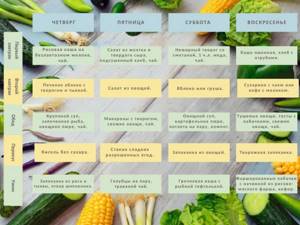
Diet menu “Table No5” for urticaria for children and adults
Diet therapy for certain categories of patients
Children, pregnant women and nursing mothers are particularly vulnerable to urticaria. Young children have not yet strengthened their immunity, and the female body during this special period is too weakened by hormonal changes, childbirth and breastfeeding.
Urticaria in children, as in adults, occurs as a response to medications, insect bites and certain foods. If the hives rash does not go away within a few days, the child will need a hypoallergenic diet. Since the children's digestive system is finally formed by about 3 years, the diet for a child aged 4 years and younger should exclude the allergen that caused hives on the body, all citrus fruits, seafood and foods with preservatives. Milk formulas for complementary feeding of infants should be hypoallergenic; your family doctor will tell you which to give preference.

The features of the diet for urticaria are to provide the growing body with all the necessary vitamins and minerals. The diet should include products from the hypoallergenic list, prepared at home, preferably steamed.
So, what to feed a child with hives:
- buckwheat, corn and rice porridges on water;
- yogurt, kefir, cottage cheese - without dyes, fruits and flavors;
- from meat - beef, turkey, rabbit;
- first courses with vegetable broth;
- dried bread, dry bread, crispbread;
- bananas, pears, apples.
With dermographic urticaria, care must be taken to ensure that the child does not scratch the body and cause infection. Treat the affected areas promptly and give your child antipruritic medications.
Urticaria occurs much more often in adolescents than in children of other ages. This is due to the fact that rapid hormonal changes occur in the youthful body. Often, rashes due to urticaria are idiopathic in nature, that is, it is impossible to determine their cause.
The features of the diet for urticaria are to provide the growing body with all the necessary vitamins and minerals. The diet should include products from the hypoallergenic list, prepared at home, preferably steamed.
Recipes for hives
In this block we will share with you recipes for dishes for hives. We have selected five recipes that are perfect for any chosen allergy rash diet. Baked apples with cottage cheese and pumpkin Ingredients:
— Apples (3 pcs.) — 40 g pumpkin
—
70 g cottage cheese
—
Sugar/stevia (1 tsp) - Cinnamon (if allowed)
—
Oat flakes
Method of preparation:
Cut the pumpkin into small pieces and lightly simmer or grate on a coarse grater and use raw.
Mix pumpkin with cottage cheese, sugar and cinnamon. Remove the core from the apples so as not to damage the bottom. Fill the apple containers with the resulting mixture and place on a greased baking sheet. Sprinkle oatmeal on top. Bake apples for 30 minutes at 180 degrees. Soy/lactose-free milk and potato soup Ingredients:
- 1 liter of water - 200 ml of milk - 3 medium potatoes - 1 onion - Parsley - Salt
Method of preparation:
Peel the potatoes and onions, cut into small squares;
cover them with water and cook for 15 minutes. Then add milk, salt and cook for another 10 minutes. After cooking, pour the soup into bowls and serve with parsley. Turkey meatballs with zucchini Ingredients: -
Half a medium-sized zucchini - 400 g turkey breast - 3 tbsp.
l. rice—Salt Method of preparation:
Grind the zucchini in a blender, then grind the turkey meat and mix the resulting masses.
Boil the rice until half cooked and add to the minced meat, salt the minced meat and add herbs if desired. Then form small balls and place on a baking sheet or in baking dishes. Bake for 30 minutes at 180 degrees. Smoothie from kefir and fruits Ingredients:
- 300 ml of kefir - Banana (1 pc.) - Pear (1 pc.)
Method of preparation:
Cut the banana and pear into cubes and chop finely in a blender.
Add kefir to the resulting mixture and beat. Cottage cheese casserole Ingredients: -
400 g low-fat cottage cheese
- 2 tbsp. semolina
- 2 tbsp. butter
- Raisin
- 2 egg whites
Cooking method:
Rub the cottage cheese through a sieve and add stevia extract or sugar if desired. Then add semolina and raisins (pre-soaked). Beat the whites and add to the resulting mixture. Grease the pan with oil, add the resulting mass there and bake for 35-45 minutes at 180 degrees.
Hypoallergenic weekly menu
The list of dishes for adults is extensive. Its key principle is the selection of products that cannot cause allergies. As an example of a diet for 7 days, you can use the approximate layout:
| Breakfast | Dinner | Dinner | |
| 1st | Oatmeal porridge cooked in water | Meatless soup, mashed potatoes, steamed cutlet, green or herbal tea | Macaroni and cheese, tea |
| 2nd | Buckwheat porridge plus kefir | Puree soup from a vegan diet, boiled dietary meat, noodles, fruit compote. | Baked potatoes with skin or casserole, tea. |
| 3rd | Baked apples with cottage cheese, weak black tea* | Soup with minced beef meatballs, steamed zucchini, dried fruit compote | Stuffed zucchini stuffed with rice and minced meat |
| 4th | Millet porridge, bran bread | Pea soup (vegetarian option), boiled chicken, kefir | Navy pasta with boiled veal or pancakes with apples, cherry compote |
| 5th | Cooked rice, dry unsweetened biscuits | Borsch (shchi), onion-cucumber salad with olive oil, compote of apples or pears. | Buckwheat casserole, boiled dietary meat, whole grain bread, oregano or linden tea |
| 6th | Skinny cottage cheese casserole with raisins or dried apricots | Meatless puree soup, pasta, uzvar | Barley porridge with veal side dish, bran bread, jasmine tea |
| 7th | “Hercules” plate, baked apples, “Maria” cookies | Vermicelli soup or liquid lentil puree, potatoes with chicken, bread, pear compote | Vegetable stew with zucchini, unrefined flour bread, rowan tea |
* In the mornings from the 3rd to the 7th day, drink weakly brewed black tea.
In addition, dietary nutrition can be expanded with herbal infusions of oak bark, succession grass, chamomile flowers and burdock root. Taking a decoction of dried walnut leaves in the morning has a healing effect.
Celery helps cure hives, relieve allergies and strengthen resistance to illnesses:
- Freshly squeezed root juice is taken three times a day, 1 tsp. half an hour before meals.
- The grated root (1 tbsp) is poured with boiling water (1.5 l), infused, then wrapped and left for 4 hours. Use 1 tbsp. l. 30 minutes before meals in 3-4 doses.
Despite the ban on many products, these dishes can make food healthy, tasty and varied.
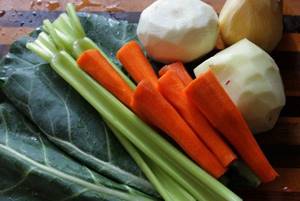
How to prevent hives: recommendations after recovery
After getting rid of hives, it is important to continue to eat properly, especially if you suffer from allergic reactions to food.
There is no particular reason to adhere to a strict diet, but it is worth refraining from unnecessary contact with the allergen. If you do not follow the basic rules, the hives may return.
When visiting a medical facility, it is necessary to notify the attending physician about the presence of urticaria at any time. What is it for? In order to avoid the possibility of relapse of the disease. In the next article, we take a closer look at the causes of solar urticaria and how to prevent it.
Share with friends
Rate this article


